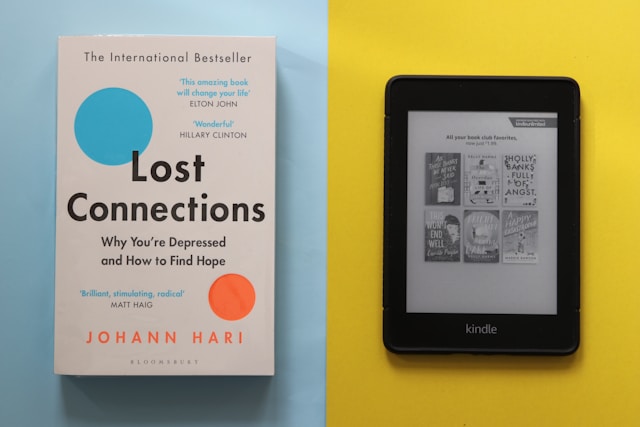You now have a manuscript that you are happy with and you cannot wait to share it with the world. The question is, how exactly do you want to share it?
With the rise of companies like Kindle, eBooks have started to displace traditional paper books in some place, but the Canadian book market has actually experienced a renewal of interest in printed books and they seem to be the preferred choice for Canadian readers.
Still, eBooks have many advantages that should not be ignored, so even if you’re a hardcore paper book fan, you should consider all your options if you’re planning on releasing a book yourself.
In this article, we will take a look at some of the main pros and cons of printed books and eBooks. We hope that we can help you make an informed choice about your future bestseller.
Printed Books
Let’s start with the traditional format, or a book printed on paper. We personally love the feel and smell of a book and we prefer paper books over eBooks, but as writers, we must be realists and acknowledge the flaws of printing your own work.
Take a look at our list of pros and cons of publishing your book in a standard paper format:
- Advantages:
- Design – You can endlessly customise your book if you choose to print it; this means picking the type of paper, choosing the texture of the cover, painting and decorating the edges of the pages, and many more things.
- No Battery, No Problem – Imagine explaining to a medieval lord that you can’t read your book because it isn’t charged, insane! Some readers like the instant availability of physical books which makes sense.
- No Eyestrain – We are surrounded by too many screens these days which explains why ophthalmologists can now afford yachts.
- Exhibition – How many books have you bought after randomly finding them in a bookstore? It’s arguably more likely for one to spend money on a physical book because it has more aesthetic appeal than an eBook.
- Promotional Events – Traditional books tend to be promoted more widely than eBooks, including in-person events where you can meet your readers and gain new ones.
- Collectability – Some readers simply love collecting books and displaying them.
- Disadvantages:
- Difficulty Getting Published – It’s harder to strike a publishing deal for a physical book because the publishing house needs to know for a fact that your book would turn enough profit.
- Cost – If you go down the self-publishing route, get ready to spend a lot of money on printing.
- Logistics – If self-publishing, you have to think about where to print your books, how many copies you need, where to store said copies and how to deliver them. This isn’t a one-time thing either; you have to make a long-term plan to continuously supply customers with copies of your book.
- Higher Price – Physical books can be expensive, and consequently lead to fewer people purchasing them. Still, this can be considered an advantage because it translates to more money being made on a single sale.
eBooks
We know what we said about traditional books earlier, but we do have a big collection of eBooks on Kindle, so we believe we are being fair. Here are the main pros and cons of publishing an eBook:
- Advantages:
- Mobility – All your collection is stored in a single device or an account which allows you to go anywhere with your own little library in your bag.
- Free Preview – Most eBooks allow you to read a sample (usually a chapter) which can hook up the reader and make them buy your book. Sure, you can read a chapter from a physical book at the bookstore, but how many people actually do that?
- Instant Gratification – You can purchase a book from the comfort of your home and instantly read it. While Amazon Prime can deliver you a book within a day, it can never be as fast as buying an eBook.
- Better Chances of Being Published – This is one of the two main advantages of publishing an eBook. It’s more likely to be offered a publishing deal for an eBook.
- Royalties – The other big advantage of eBooks are the royalties. Generally speaking, eBook authors receive around 25% in royalties, while authors of printed books between 5%-15%.
- Cost-effective – If you’re self-publishing, choosing the eBook format would save many headaches and a lot of money.
- Disadvantages
- Eyestrain – Eyestrain is especially prevalent when reading on your laptop, though devices like Kindle provide a healthier alternative.
- Charging Devices – Self-explanatory.
- Lower Price – While royalties for eBooks are higher than those of printed books, prices are lower, so you might end up making less money on a single sale in comparison. However, the lower price incentivises readers to buy books, so it can be a positive.
- Temporality – You can lose access to an eBook if the formats or terms change. You can also lose access to your whole library if something happens with your account/device. Sure, you can lose a book, but these potential eBook flaws don’t result from you being irresponsible about your possessions.
Conclusion
These were the main advantages and disadvantages of publishing a physical book versus an eBook. We hope that our article managed to provide you with the basic pros and cons of each format, so you can choose which one is right for your future book.




